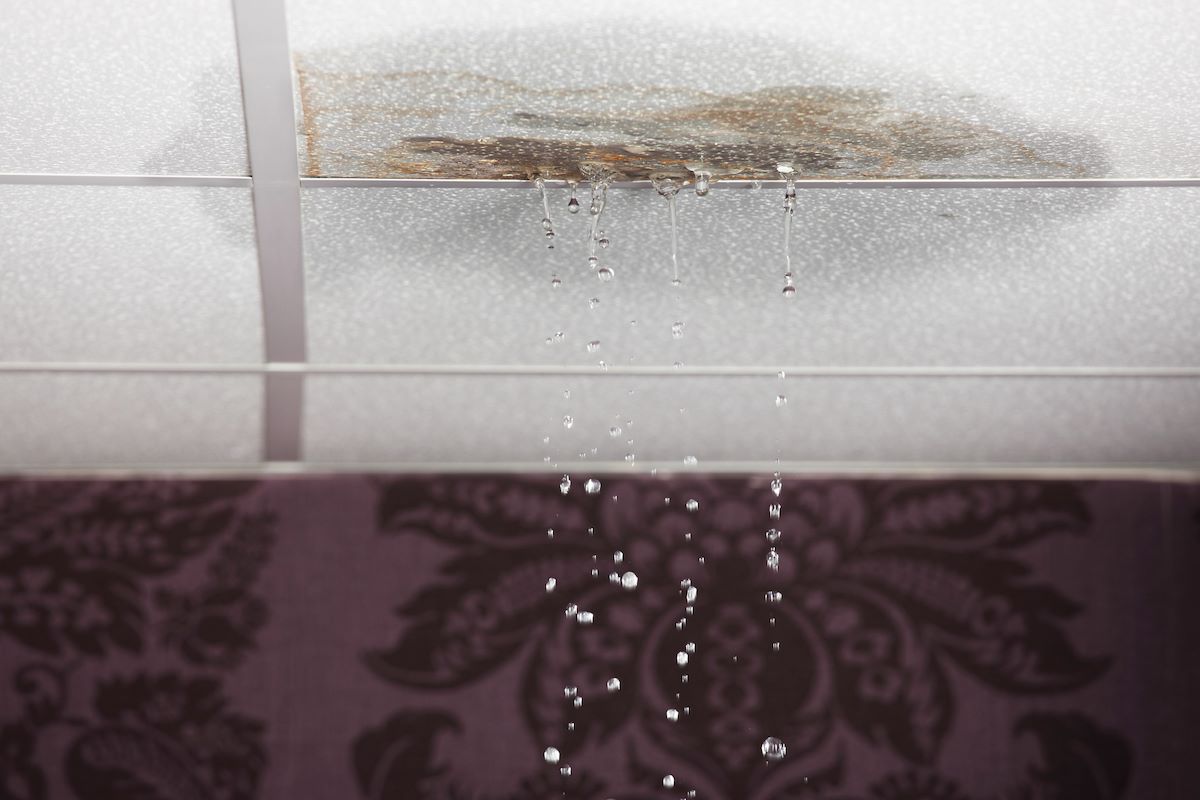It’s a scenario that brings anxiety to every homeowner. Maybe you wake up after a storm to find a wet spot on your ceiling. Or you come home from work to find a flooded basement after a water heater burst. Whatever the cause of excess water in your home, time is always of the essence to mitigate damage.
But even once you remove the water and dry any damaged surfaces, preventing mold after water damage should be your primary concern. Luckily, there are a few actions you can take to make the restoration process smoother and limit the opportunity for a mold outbreak.
How to Prevent Mold After Water Damage
Mold can start growing on a damp surface within a single day. So your first step in preventing mold after water damage is to remove as much water as possible and completely dry an affected area.
Large-scale water damage situations require the help of a professional water damage restoration team. But if the water has only impacted a small area of your property, you may be able to utilize household items like large wet/dry vacuums and fans to dry the area.
Even if you need to bring in professional help, it’s good practice to at least start the removal and drying process as best you can.
Quick Actions to Prevent Mold Growth
Once you begin the drying process, there are a few other actions you can take to help stop mold growth in its tracks:
- Remove all wet materials: Immediately discard any removable items or surfaces affected by the water damage, including ceiling tiles, drywall/insulation, rugs, and furniture (if unsalvageable). By removing potentially affected areas, you can mitigate the spread of mold spores that may have already started growing.
- Clean and disinfect: Use a combination of detergent and water to clean any affected surfaces or items. For hard surfaces like tile and wood, you can use soapy water and a bristle brush.
- Ventilate the space: Open doors and windows to allow fresh air in and continue to dry out the space. If the excess water occurred in a room with an exhaust fan, turn it on and let it run.
While the U.S. Environmental Protection Agency (EPA) approves of a DIY approach for moldy areas less than about 10 square feet (roughly 3 feet by 3 feet patch), anything larger or visible mold that won’t go away after vigorous cleaning should be handled by a professional mold remediation team.
Water Damage Restoration from Valley Restoration Serving Ketchum, ID
In emergency water situations, the water needs to be removed from your home as quickly as possible to mitigate as much long-term damage as possible. Valley Restoration utilizes a multi-step water extraction and structural drying plan to contain the water and stop the spread of water damage. Our team will:
- Extract the water: We use a variety of water extraction tools to pump standing water out of your home, as well as porous or absorbent materials like carpet and drywall.
- Detect any moisture: Throughout the process, our team will inspect your home for moisture, find intrusion points, detect hidden pools of water inside the walls or behind fixtures, and refine our structural drying goals.
- Dry the structure: Pumps can’t remove every trace of moisture, so our team of expert technicians will use air circulation tools and HVAC systems to start drying affected studs, furniture, and flooring.
- Dehumidify the air: Floods make the air humid, especially in enclosed rooms. We will remove any excess moisture from the air, preventing the chance for mold to take hold.
- Monitor the situation: Our team will create a plan to restore your home to safe moisture levels within 72 hours in most circumstances and continue monitoring progress to ensure the job is done right.
Other Long Term Mold Prevention Tips
You can’t always predict when disaster will strike, but you can put yourself in the best possible position to keep the likelihood of mold growth as low as possible. Here are a few additional steps you can take in your home to mitigate your mold risk:
- Keeping your home dry in general; don’t allow water build up anywhere, including shower walls or wet clothes in the washing machine.
- Use mold-killing cleaning products on shower curtains and bathroom tiles regularly.
- Be mindful of indoor plants and the mold that can grow in soil.
- Use exhaust fans in the kitchen and bathroom to limit moisture in the air.
- Act quickly and fix any leaks when you notice them.
- Keep basements and garage areas well-ventilated and consider utilizing dehumidifiers in hot or humid seasons.
- Use waterproof materials in areas that may have regular exposure to water (windowsills, exposed plumbing, bathroom rugs, etc.).
- Consider investing in a moisture detector if you suspect there may be water behind your walls or under your floors.
Full-Service Disaster Restoration for Over 50 Years
Home disasters can be scary and overwhelming, but you don’t need to face the unknown alone. From the aftermath of a storm to plumbing disasters that get out of control, our water damage restoration experts are here to address the issue and return your home to its previous condition.
At Valley Restoration, we’re here to help you during every stage of recovering and restoring your home after a disaster. Our certified IICRC technicians are committed to providing you with the finest property restoration services possible using the most recent technology and state-of-the-art equipment. When speed is crucial, get an emergency home restoration team at your door as quickly as possible.
Since 1968, we’ve helped families and business owners in the Wood River Valley area take the proper steps to restore their properties and rebuild their lives in the face of disaster. Are you seeking a reliable, full-service disaster recovery service in the Ketchum, Sun Valley, Hailey, and Bellevue, Idaho areas? Contact Valley Restoration today!

